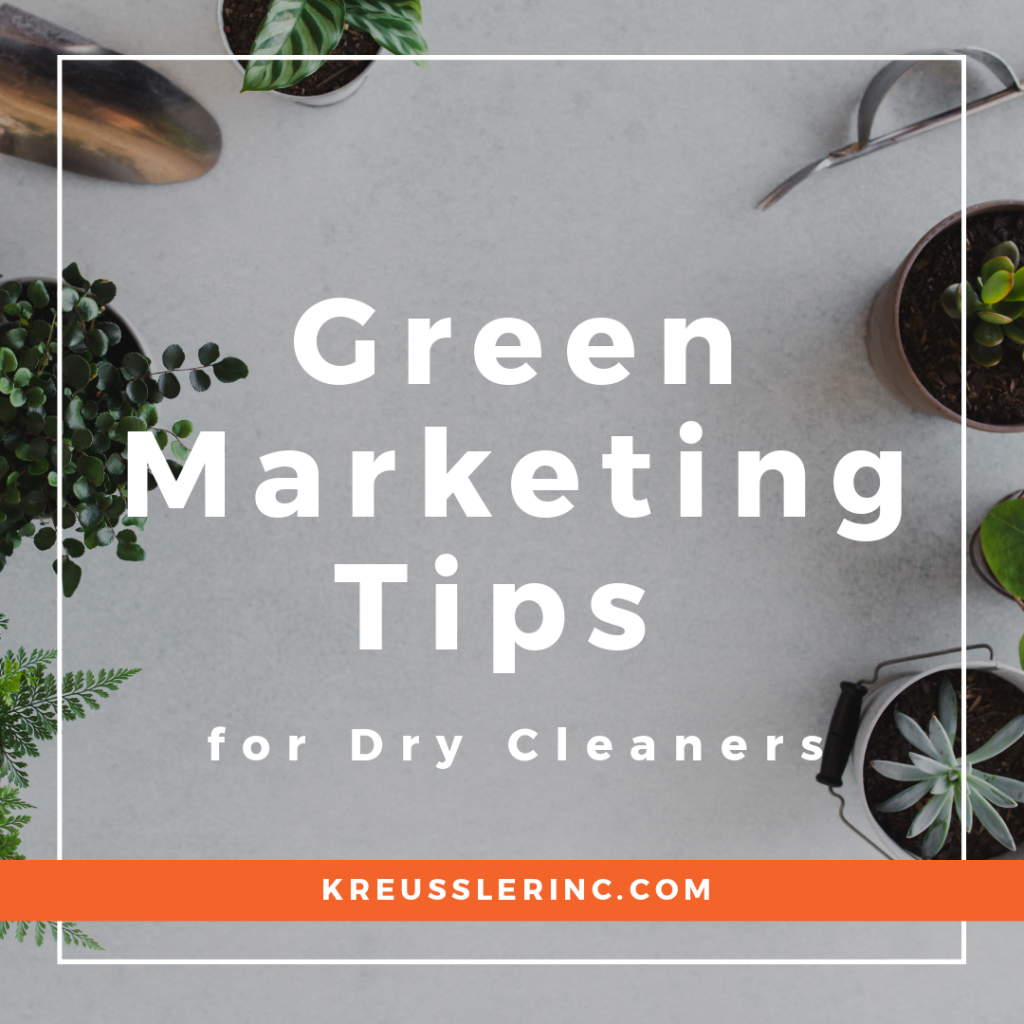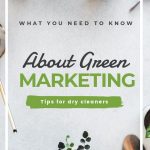We’re thrilled to have this guest article by Sara F. Hawkins, Esq. with green marketing tips for dry cleaners.
As more and more attention is paid to the environmental impacts of chemical use, the dry cleaning industry as a whole gets placed under the microscope of regulators and grab the attention of consumer groups. Though most dry cleaners tend to be family-owned small business, as an industry it is regulated as heavily as corporate industrial giants. All while trying to provide a basic service to millions of people every year.
Like other local businesses, dry cleaners have relied on traditional advertising for decades. Social media provides other media platforms, though the competition and noise consumers face in their online feeds makes it even more imperative that dry cleaners differentiate themselves. So you have! From small differences like home-pickup and delivery to major systems efficiencies, you want to let customers know you’re better than the competition, and you need something more than price. Consumers are savvy, and many are concerned about the environment and are making changes in how they select their service providers. Consumers are looking for ‘eco friendly,’ ‘organic,’ ‘all-natural’ products and services. But what do these mean?
For many consumers, they’re buzzwords that draw their attention. But for state and federal regulators, these words are more than mere suggestions that your business uses products and follows procedures that are good for the environment.
In fact, this idea of incorporating environmentally friendly phrases into marketing materials started nearly half a century ago. But in the 1990s the Federal Trade Commission (FTC) and many states began to establish rules and guidelines for making these statements in an effort to create standardization for consumers. Some states provide environmental certification to dry cleaning plants based on the type of products and processes used. Other states merely inspect for compliance but do not recognize those facilities that have reduced or eliminated many of the environmental issues specific to the industry. So, while this levels the playing field on a state level, as consumers move and relocate the industry still lacks a national standard which makes it even more important to find ways to incorporate these various phrases into your marketing.
However, because the FTC and many states regulate these environmental statements, it’s important to know how to correctly incorporate them into your marketing. With environmental claims, you must have reliable scientific evidence to back up your claim as well as understanding how customers will interpret the claim to ensure your claim is not misleading. Though it’s very easy to find artwork that has buzz-words like ‘organic’, ‘eco’, or ‘recyclable’ and commonly understood icons that convey something is good for the environment, in the dry cleaning business use of those words and icons can be misleading. The hangers and bag you use may, indeed, be recyclable but are they? And if they are, is it a high enough percentage to be meaningful and support a statement such as ‘We use recyclable materials!’?
There is no standard that defines when a product or service is ‘eco-friendly’, so it will be up to you to have both scientific and consumer data to support such a claim. Same with ‘organic’. For the average consumer, ‘organic’ may mean that something is created without harmful chemicals, is good for you. That concept alone may not translate to the dry cleaning industry for them. However, within the industry, there is a standard meaning of ‘organic’; though it’s unclear that the average consumer understands that organic dry cleaning means that Perc has been replaced by other solvents.
So, what do you do? Your competitors are making these claims, and you don’t want to lose customers. Your customers are asking questions, and you want a quick and easy way to let them know you’re taking steps to reduce the environmental impact of your business. You don’t want to be left behind, but you also don’t want to face regulators either. Following are a few tips to help you ensure your marketing keeps you seeing green:
- Avoid using general terms that don’t have a clear meaning and are broad and unqualified, such as “green” and ‘eco-friendly’.
- Ensure that you can claim environmental benefits if you are purchasing power offsets
- If you’re claiming recyclability, provide receptacles and educate your customers
- Provide sources for your customers to learn about what ‘organic’ means in the industry and explain how you are incorporating these new products and processes
- If you’re using a third-party certification or seal of approval, know that you are still responsible for substantiating any claims made
- Before making a claim that the products you use are non-toxic, ensure that ALL products meet this standard and that there is sufficient scientific evidence from the manufacturer of the products to support the claim
- Consider what your customer would understand and what potential customers would infer from your marketing statements.
- Consider all the potential environmental impacts, not just the ones customers are concerned with
- Just because your competitor does it, doesn’t mean it’s right!
Incorporating green claims into your marketing can be beneficial, but there are challenges. However, with a bit of planning, you can stay on the right side of the law.
Copyright Sara F. Hawkins – learn more on her website.
Licensed to Kreussler, Inc. for newsletter and trade marketing purposes


